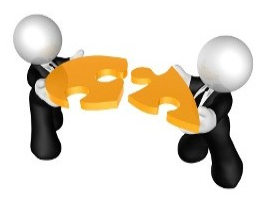
Paul Burke Training Group
Telephone: 1-250-385-6468. Toll-Free: 1-855-MI-TRAINERS
Web: www.paulburketraining.com
E-mail: info@paulburketraining.com
Beyond training: Looking at learning MI in a whole new light!
Thoughts on Improved Practice (TIP) #2314

Information-Giving can be a power tool.
The best advice with all power tools is to use them carefully. The experience for too many of our clients is that information has not so often been used as a resource as it has been delivered as a weapon. (or at least as an attempt to “push” toward a specific change agenda. Thus, some clients are skeptical when they hear information coming their way. They ask themselves:
“Is this person trying to change me?”
(and when the answer is “yes”, they lock in their heels).
When information is given to a client in an attempt to persuade them to do (or not do) something, it is NOT really information at all! (In that case it is coded as MINA –(Motivational Interviewing Non-Adherent).
Matching information to the motivational state of your client:
Information, when given at the right time, in the right way, and when constructed to fill a motivational need in your client can be powerfully motivating. Given at the wrong time, in the wrong way, or when provided in order to persuade, coerce, threaten, warn, lecture, (or “preach” to) a client can diminish motivation more quickly than almost anything else you can do.
That said, offering information to clients is often overlooked as a helpful thing to do for clients who are having trouble pursuing change. Providing the right information, at the right time, and in the right way can be of immense value to clients when they are ready to be receptive (or when you have readied them!).
Depending on which obstacle(s) stand in the way of a client changing, providing information is a process that requires much customization and forethought.
A Few Things To Consider When Preparing To Give Information For The Purpose Of Helping:
READINESS TO CHANGE: Some clients falter with change because they are not READY to change. When readiness is an issue, it is almost always because the client needs more time to sort out his/her ambivalence about change. For these folks, where information is needed, it is important that such information highlights the “upside” of change (the benefits of pursuing the target behavior). Information provision that helps people think about “how” to change is pretty much useless until a person has concluded that s/he is ready to change.
WILLINGNESS TO CHANGE: Willingness to change comes when clients have heard their internal reasons for change sufficiently to decide that the pursuit of a particular change is important. When willingness is the motivational obstacle that stands in the way of change, information provision can sometimes be helpful, provided that it serves to help people see the IMPORTANCE of pursuing the targeted change. People who don’t see change as important are seldom willing to pursue it. For such clients, customizing and adapting information to target the “importance motivator” is necessary – and helpful.
ABILITY TO CHANGE: Another client may be ready to change (because s/he is aware that the benefits outweigh the costs) and also willing to change (because s/he knows to do so is important), and yet may still have insufficient motivation for change because of a perceived INABILITY to achieve the desired change. Giving information that is designed to enhance readiness (the decision), or that is intended to promote willingness (perceived importance) is pretty much useless to people who don’t believe they are capable of making the targeted change. For such people, information that reinforces an internalized sense that change is possible is not only helpful – it is also crucial.
A Few Things To Consider When Preparing To Give Information For The Purpose Of Helping:
- READINESS TO CHANGE: Some clients falter with change because they are not READY to change. When readiness is an issue, it is almost always because the client needs more time to sort out his/her ambivalence about change. For these folks, where information is needed, it is important that such information highlights the “upside” of change (the benefits of pursuing the target behavior). Information provision that helps people think about “how” to change is pretty much useless until a person has concluded that s/he is ready to change.
- WILLINGNESS TO CHANGE: Willingness to change comes when clients have heard their internal reasons for change sufficiently to decide that the pursuit of a particular change is important. When willingness is the motivational obstacle that stands in the way of change, information provision can sometimes be helpful, provided that it serves to help people see the IMPORTANCE of pursuing the targeted change. People who don’t see change as important are seldom willing to pursue it. For such clients, customizing and adapting information to target the “importance motivator” is necessary – and helpful.
- ABILITY TO CHANGE: Another client may be ready to change (because s/he is aware that the benefits outweigh the costs) and also willing to change (because s/he knows to do so is important), and yet may still have insufficient motivation for change because of a perceived INABILITY to achieve the desired change. Giving information that is designed to enhance readiness (the decision), or that is intended to promote willingness (perceived importance) is pretty much useless to people who don’t believe they are capable of making the targeted change. For such people, information that reinforces an internalized sense that change is possible is not only helpful – it is also crucial.
When you are mindful of the specific motivational need(s) of your client (e.g. readiness need, willingness need, or ability need), and when you target such needs with good quality and well-timed information, the information you supply often becomes powerfully motivating. You could even say that your information can become the “missing piece” to your client’ motivational puzzle.


In all, what I’m saying here is that it’s largely a waste of time and effort to try to put information and awareness into “unmotivated” people. The trick to making information useful is to first assess which motivational obstacle (or combination of obstacles) is hanging things up. Then, you simply match the missing pieces to information that you have selected and designed to make a good fit with the client’s receptivity.
Learning to match the information you provide with client need is an advanced skill in MI practice.
Consider the following problematic examples:
Client Statement:
I’m not quite sure whether I want to take that new medication or not. My mother had high blood pressure all of her life and she lived until she was 85! My Dad also lived to a ripe old age and he wasn’t on any medication until almost the bitter end. I don’t think it’s really that big a deal. (WILLINGNESS OBSTACLE: The client is saying “I’m not willing to take it because I don’t think it’s important enough). Well, as silly as it sounds, I don’t think it would be healthy for me to quit smoking right now. I’m already overweight and I can’t afford to gain another 40 pounds. Plus, the stress of withdrawal would be very hard on my heart. I already have heart issues as it is. I don’t need more stress piled on me right now. (READINESS OBSTACLE: The client is saying “I am not yet ready to change because I mainly see the disadvantages of making the change.”
Helper Info Response:
It’s actually quite easy to get into a routine where taking the pills just becomes a normal part of your day. I’d like to go over this pamphlet with you if that’s ok. It talks about a variety of ways that people can make taking medications just a normal part of your everyday life.
|
Matching Problem:
Mismatch. The client has a willingness issue. She needs information that would help her to see the importance of using the medication the way it was prescribed. The helper is providing information that might bolster the client’s ability to change, but the client’s motivational obstacle is willingness (perceived lack of importance). The helper’s response here is likely to invite sustain talk and arguments against change. Mismatch. Again, as above, the helper is responding to a readiness obstacle with information targeted at reinforcing ability.
In effect, this helper is saying “I know you can do it” and the client is saying “but I don’t want to do it!” Discord is the likely outcome here. |
Client Statement:
I admire people who can go back to school as adults. I could never do it. It just seems that the older I get, the less able I am to retain anything in my memory. I’d love to go back to night school and get my diploma, but I just can’t see it. I’ve never been good with self-discipline, and I know how hard people have to work to get all the assignments done. I have a good friend who did it a few years ago and she said that you really need to be organized. (Perceived Ability Obstacle) |
Helper Info Response:
Statistics show us that without a college diploma, very few people move beyond entry level positions in your field. To support a family these days takes an income at least 40% higher than you are making now, and with a diploma, your salary would eventually almost double. It’s amazing how quickly education can pay off. |
Matching Problem:
Mismatch. Here, the MI helper is providing information that addresses the motivational obstacle of willingness (establishing the importance of change) – while the client is stuck because of a perceived inability to pursue the change. If the helper doesn’t shift the nature of his information here, the client will just end up feeling bad in the awareness of the need for change, despite his realization that he cannot accomplish it. |

Information giving in MI work is conducted with a gentle touch. We never use information to “pound it into people’s heads” that they ought to change. Instead, in the MI approach, information is understood as something of a resource. When provided at the right time, with a gentle spirit and a helpful intent, giving information can strengthen motivation for change by enhancing the person’s readiness for change, their willingness to change, and their perception about their ability to pursue change.
It can also be a powerful de-motivator, When used to coerce, persuade, or to “lecture”.
Questions? Feel free to call me anytime!

Telephone: 250-385-6468
paul@paulburketraining.com
